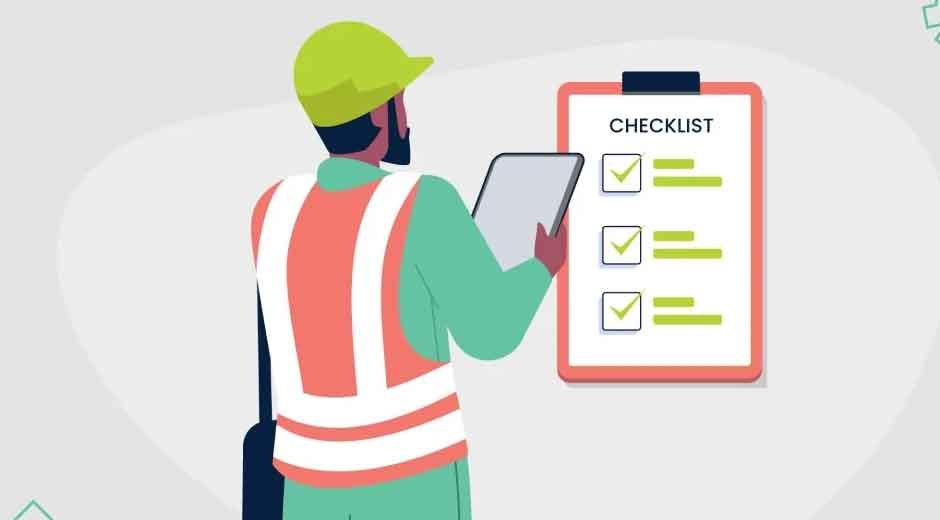Skip to the good bit
ToggleIn a rapidly evolving industrial landscape, businesses constantly push the boundaries of innovation—adopting new machinery, advanced processes, and creative design thinking. Yet innovation must never come at the cost of safety. Routine checks offer a dependable bridge between cutting-edge advancements and a secure, reliable environment. In this blog, we’ll explore how well-thought-out inspection systems ensure innovation thrives without compromising safety, compliance, or performance.
Reinforcing Safety Culture Through Routine Inspections
One of the most compelling reasons to commit to regular checks is that they embed safety into your organizational DNA. When teams see recurring inspections as part of everyday operations—rather than an occasional compliance exercise—the mindset shifts. Employees become more vigilant in spotting anomalies, reporting issues faster, and paying attention to the details that matter. This proactive mentality builds stronger foundations for innovation.
Moreover, routine inspections equip innovators themselves—whether engineers, designers, or operators—with real-world data about equipment wear, environmental conditions, and system interactions. Armed with these insights, teams can design smarter, safer solutions from Day 1 of a project.
Driving Quality by Spotlighting Hidden Risks
Innovation often involves introducing new variables: materials, components, or processes that weren’t in use before. Routine checks help expose hidden risks that could otherwise be overlooked. Consider, for example, a state-of-the-art ventilation system in a clean-room environment—while its performance might look perfect at the outset, without scheduled “deep dives” into filter conditions, airflow dynamics, and structural integrity, small issues can escalate.
Introducing a routine LEV system inspection not only verifies regulatory compliance but ensures optimal extraction efficiency. Identifying subtle airflow deviations or filter blockages early prevents dangerous dust accumulation or airborne contamination—critical for both worker safety and innovation integrity.
Ensuring Compliance While Empowering Creativity
Innovative ideas often clash with rigid compliance frameworks. However, when safety inspections are treated not as hurdles but as partners in development, compliance becomes an enabler rather than an obstacle. Routine checks supply the documented evidence regulators require, so teams have the freedom to explore new design and engineering frontiers with confidence.
Moreover, certain regulatory bodies are increasingly framing compliance around risk-based evidence and preventive measures—exactly what regular inspections deliver. With a solid inspection history, companies can showcase balanced innovation: fast-paced creativity underpinned by robust data and safety protocols.
Reducing Downtime and Ensuring Predictable Performance
Innovation without consistent uptime can be costly and demoralizing. Unexpected breakdowns not only disrupt schedules but erode confidence in new technologies. Routine checks—whether conducted daily, weekly, or monthly—help flag signs of wear, fatigue, or misalignment before they worsen.
For example, proactive vibration readings on a novel robot conveyor or scheduled lubrication of newly installed pumps can eliminate surprise stoppages. That means innovators can iterate more predictably, knowing that the underlying systems are monitored and maintained.
Turning Maintenance Data into Innovation Fuel
One of the most powerful by-products of routine inspections is the data they generate. Trend analysis—from temperature readings and noise levels to particulate counts—becomes a treasure trove of insight. This data empowers R&D teams with a feedback loop directly from the factory floor.
Instead of relying on periodic trial results, innovators can analyze real-world operational performance and refine designs accordingly. This continuous feedback not only enhances safety but accelerates smarter, more user-centric innovation.
Risk Mitigation: The Cost-Effective Path to Innovation
Let’s face it: innovation misfires can be expensive. Whether in terms of lost hours, regulatory fines, or equipment damage, the costs of unchecked risk are steep. Routine inspections act as an early warning system—enabling swift corrective actions that are often far cheaper than large-scale remediation.
By catching deviations early—say, an airflow drop in an extraction hood or a slight misalignment in robot arms—companies can avoid both major accidents and disruptive redesigns, safeguarding both people and profit.
Winning Trust with Stakeholders and Investors
Innovation doesn’t happen in a vacuum. It requires stakeholder trust—from employees and regulators to investors and partners. By demonstrating a clear, documented commitment to safety through regular inspections, businesses gain credibility that unlocks investment, collaboration, and market opportunities.
Conclusion: Safety and Innovation as Synergistic Goals
The narrative that safety stifles innovation is outdated. In today’s industrial world, routine checks are the essential glue that binds progress to protection. They bake reliability, data-driven insight, and regulatory alignment into every new initiative.
By committing to well-structured inspection programs, organizations don’t just protect people and assets—they amplify creativity, minimize risk, and unlock lasting value. In other words, true innovation always stands on the foundation of safety—and routine checks are what build that foundation, one inspection at a time.







